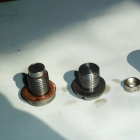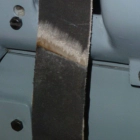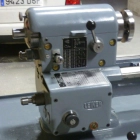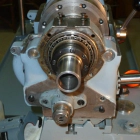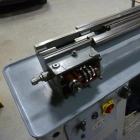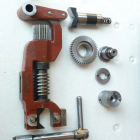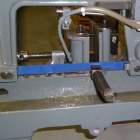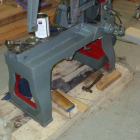The two speed driver of the lathe runs in an oil bath. Two plugs let to replace the oil when needed. We made two operations with them:
Adding a neodymium magnet to the draining plug to let it to catch the debris. The magnet is a counterbored ring bought at Aimangz. The magnet was screwed to the internal part of the plug. The plus are in a difficult position to be tightened.
